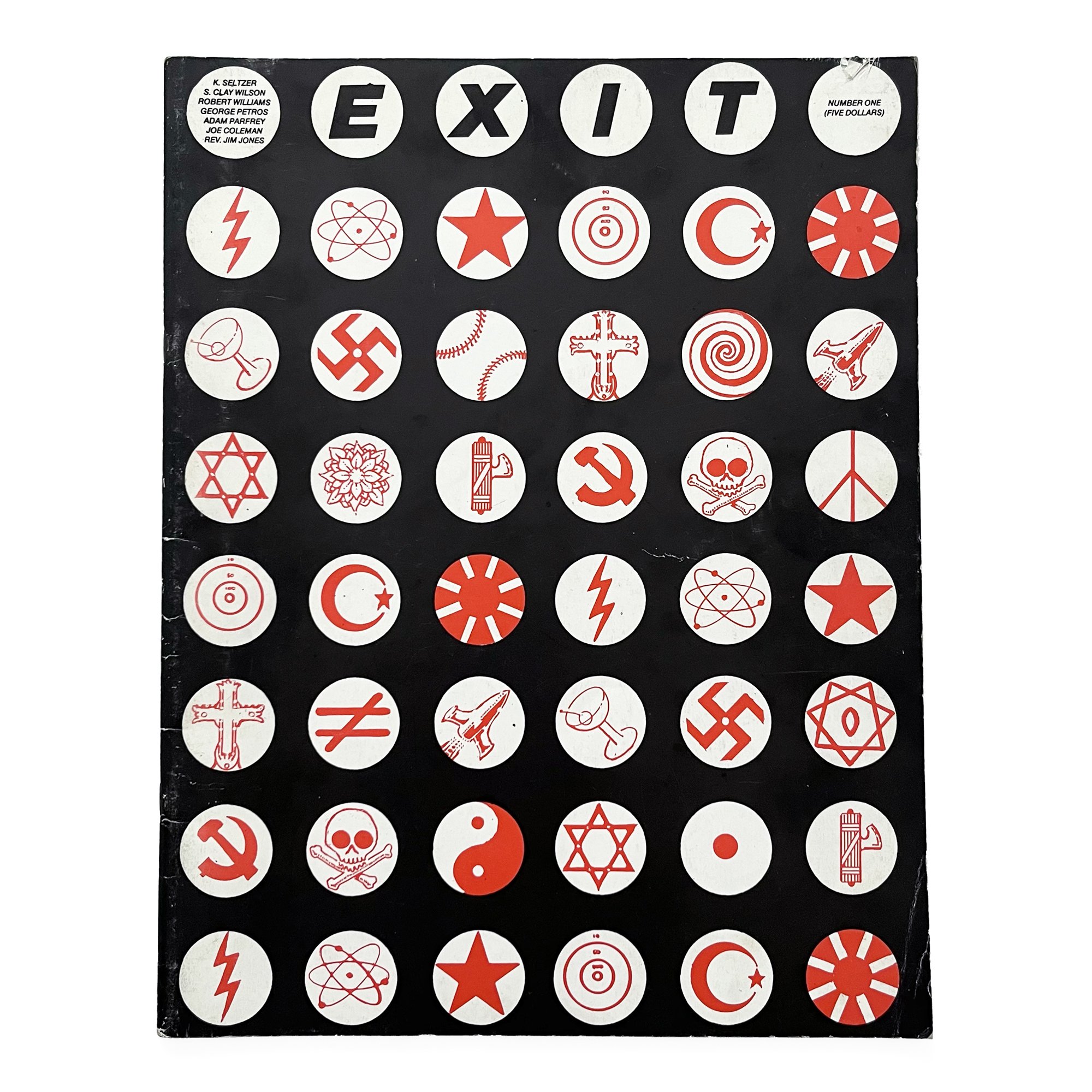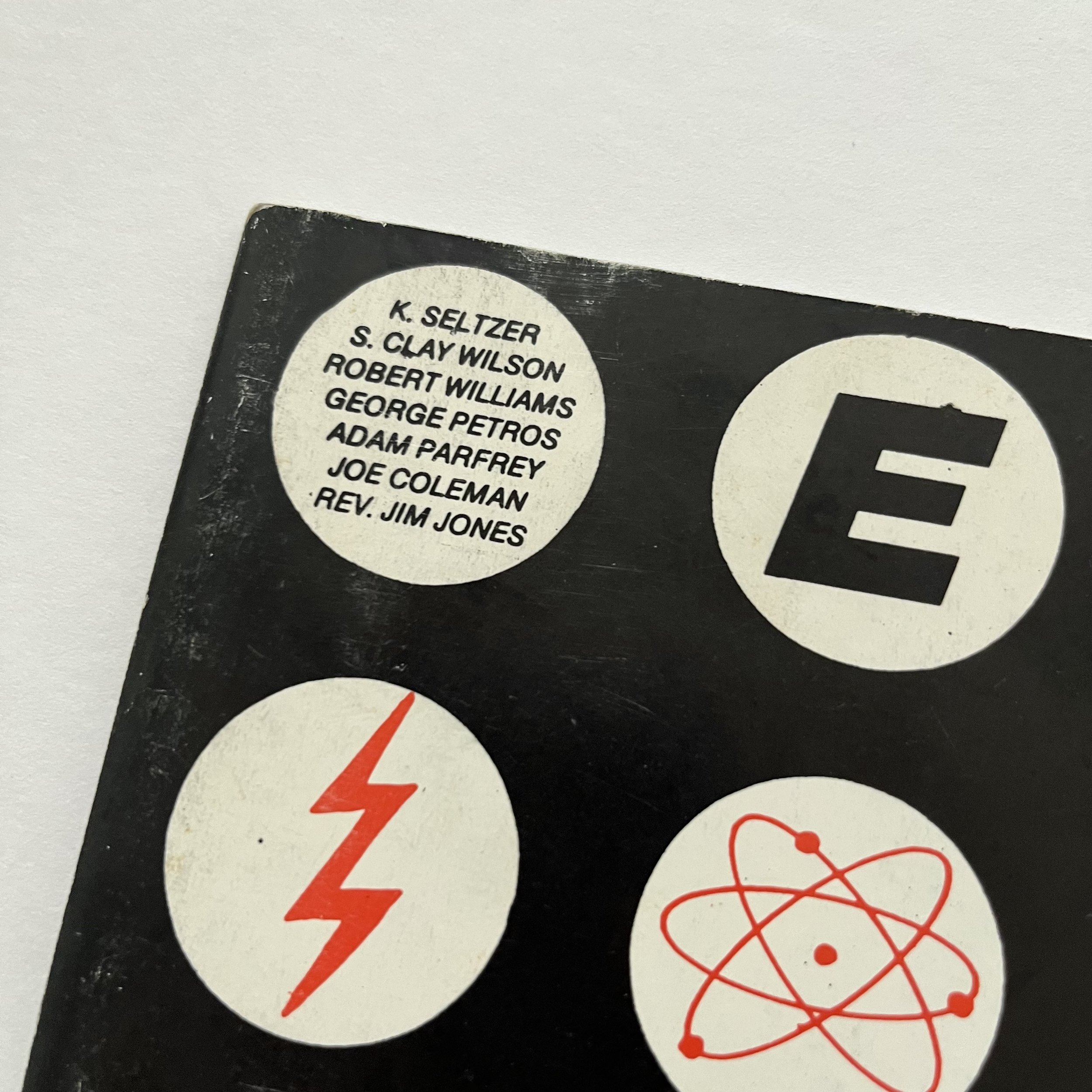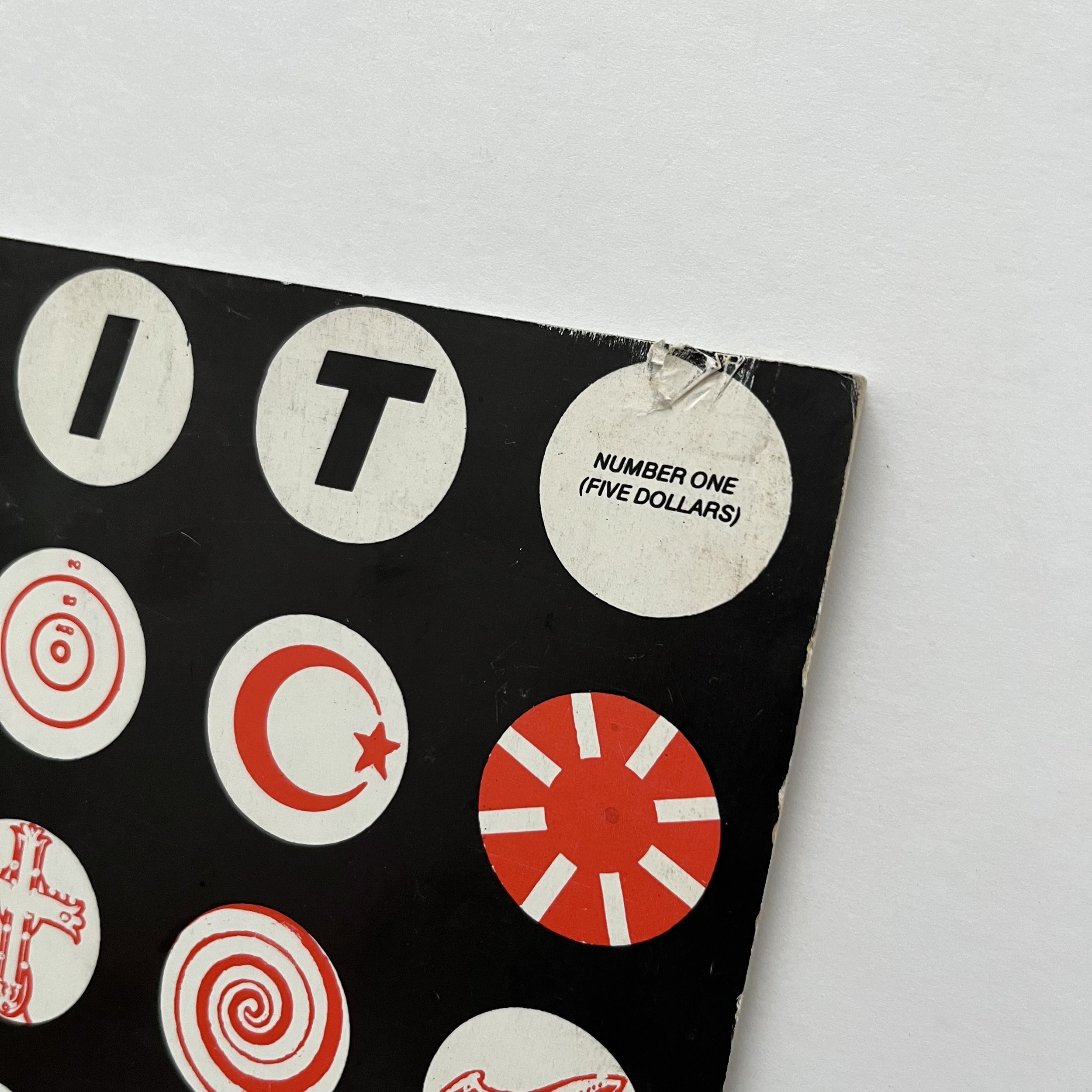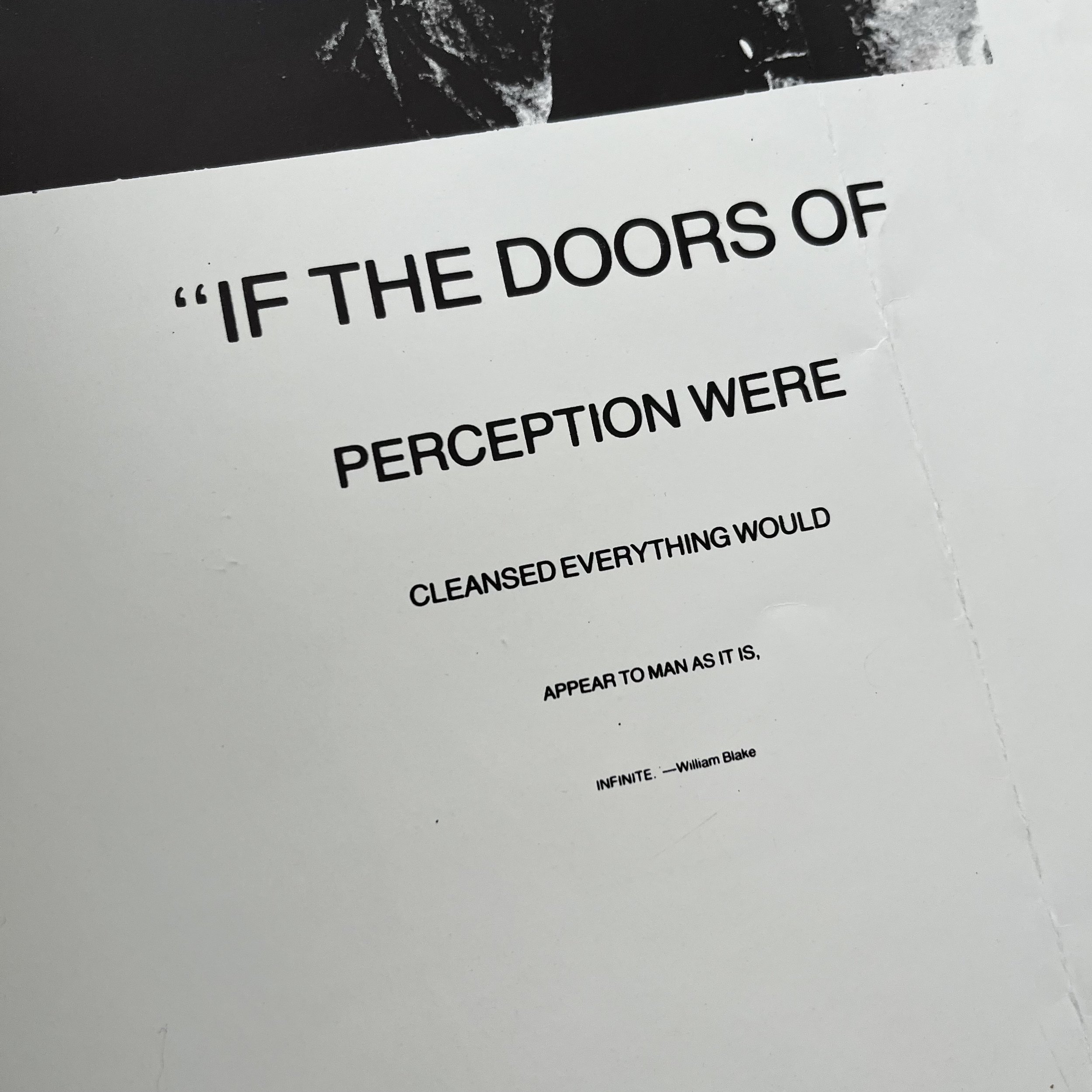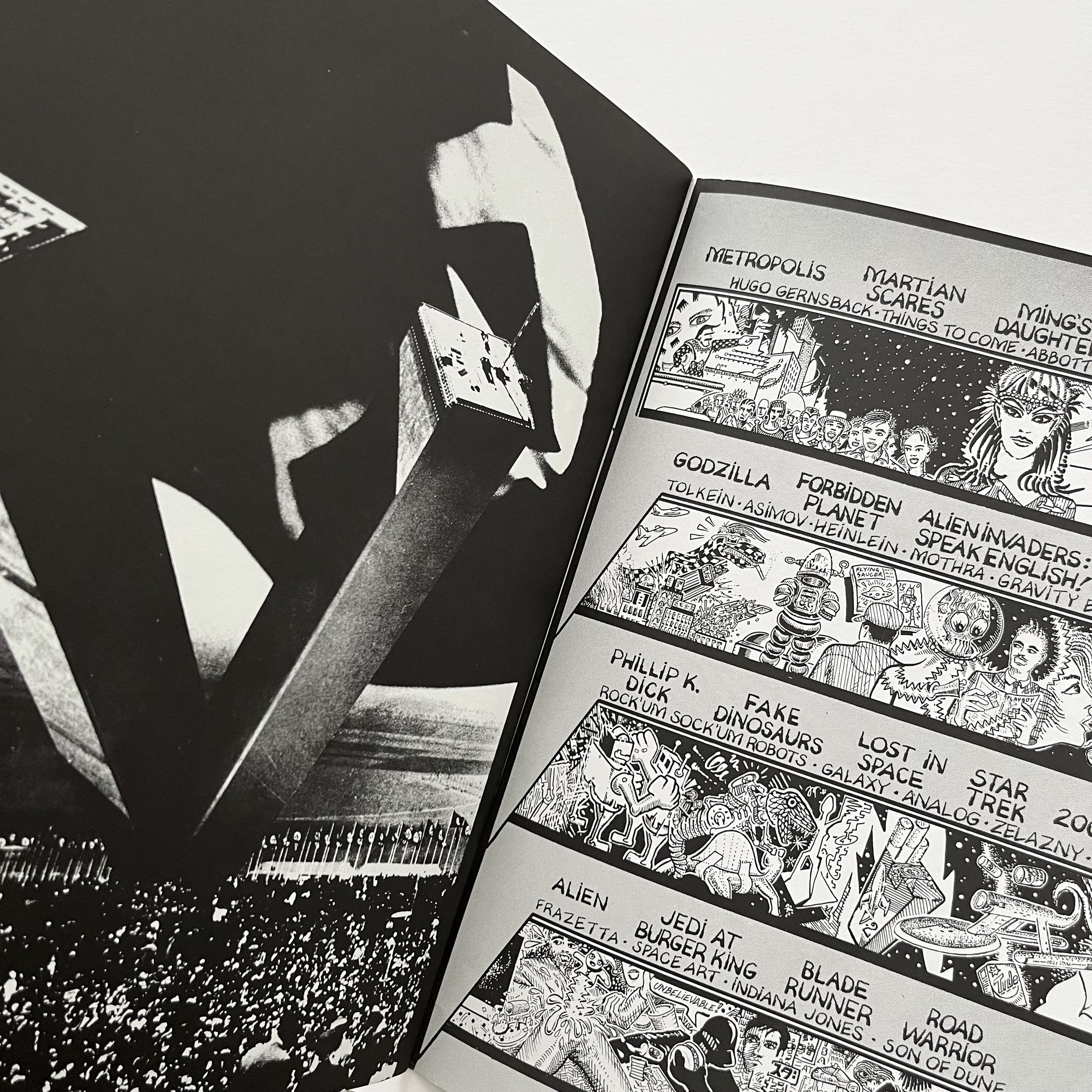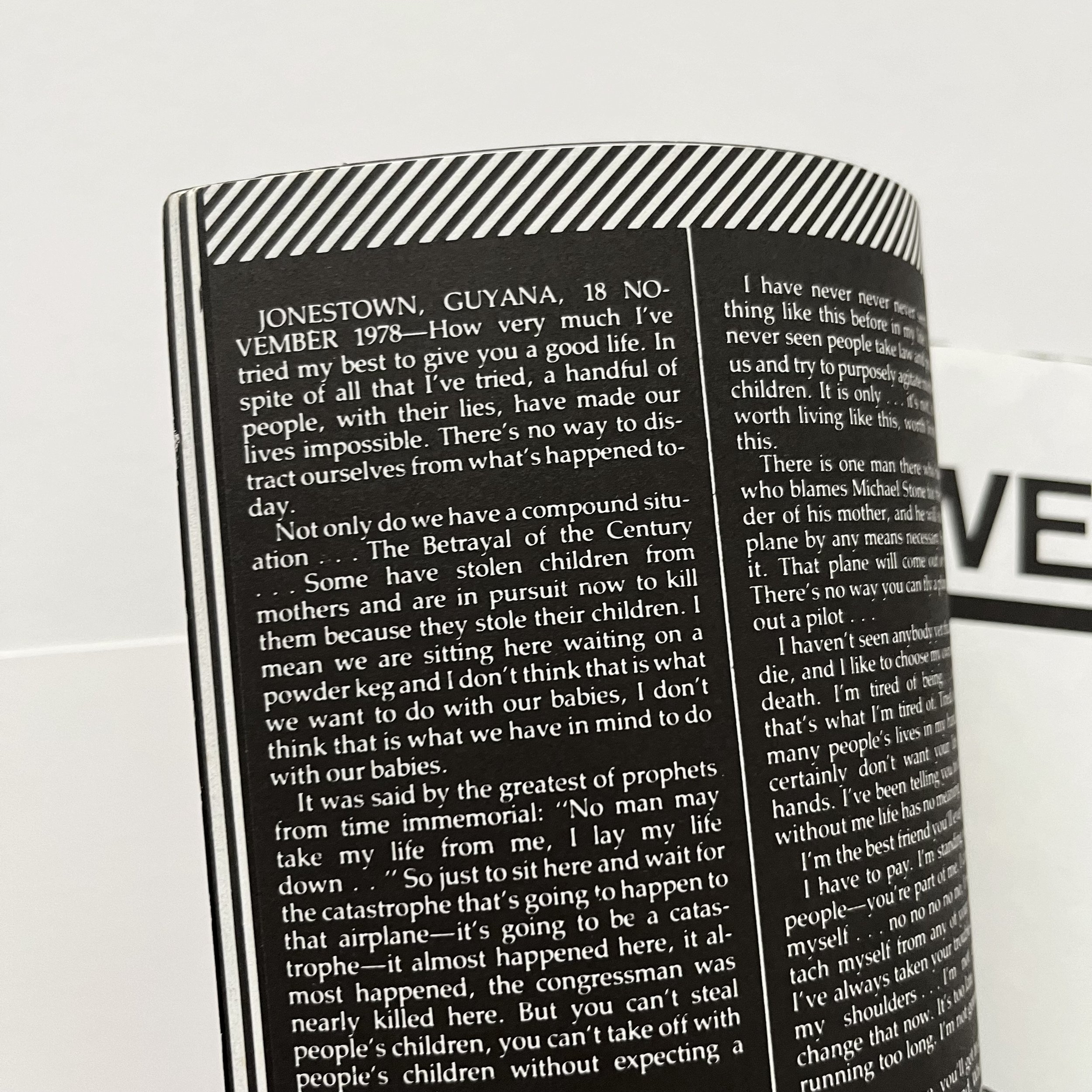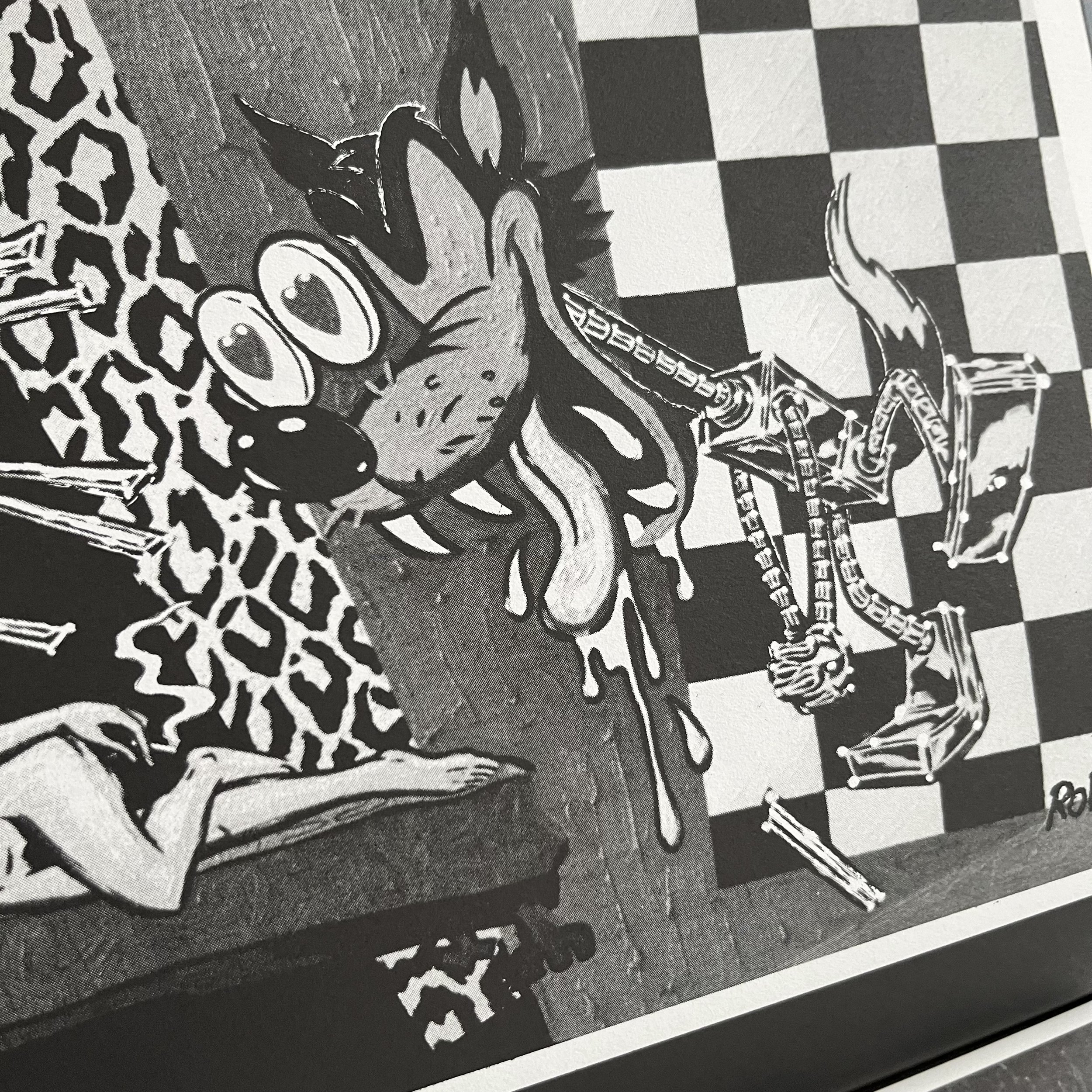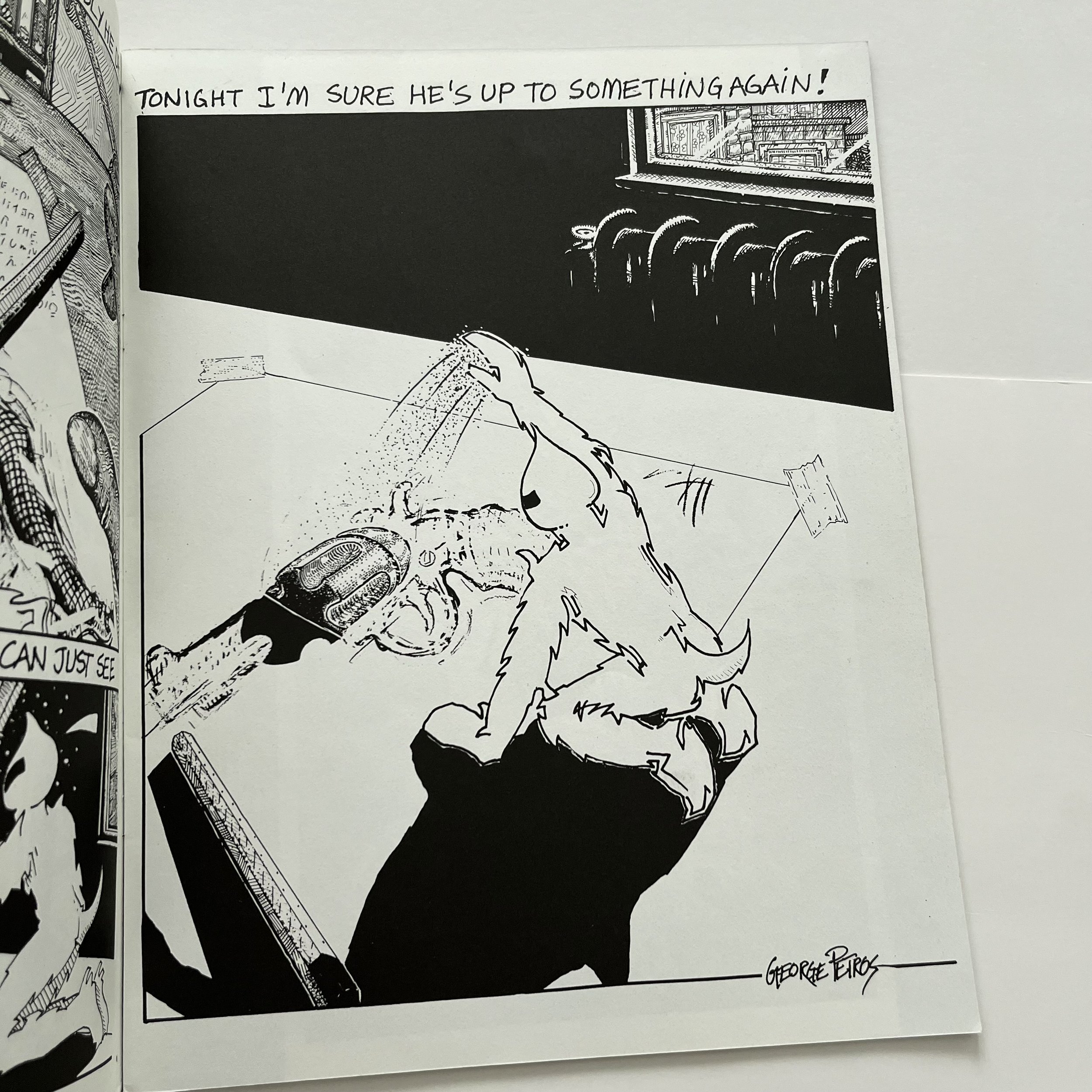1980s EXIT #1
“For a diabolical decade — 1984-1994 — I edited and published EXIT, an outlaw Pop Art magazine in opposition to both the underground and the establishment. It was a forum for extreme ideologies and inclinations manifested as political pornography, psychosexual terrorism, scientific threats and infernal texts. It was graced by contributions from the best artists and writers in America — famous, infamous, and unknown — each driven by unusual passions to excel and influence and go all the way.
You, dear reader, probably have never seen an issue of EXIT, but you certainly have felt its impact. Perhaps someone has shown you an old worn-out copy, or perhaps by some twist of fate you do own an issue or two — it doesn’t matter; most copies are now dust, or are becoming dust … the earlier issues, generally suppressed and unavailable even in their day, were manufactured by respectable printers on marginally good paper but as the magazine’s political and sexual implications grew more intense, fewer and fewer printers were willing to take the job. By the fifth issue only a local Chinese sweat-shop, whose owners had no understanding of Western symbology, would print it — on some of the worst newsprint imaginable (an especially aggravating circumstance when the non-availability of hemp paper is considered … ).
Out of EXIT came Serial Art, which utilizes timelines, graphs and diagrams to show changes and processes and the flow of situations. There also came Propagandart, which utilizes principals of advertising and propaganda to manipulate emotions and play with opinions. There also came the eradication of boundaries between Left and Right, the validation of previously outlawed symbols, the use of scientific motifs as weapons of intimidation … unfortunately the world wasn’t ready for the magazine’s vibe — it was too advanced, and so nobody was able to emulate it, and so nobody was able to rip it off, therefore it was doomed.
There were six issues of EXIT. On issues One, Two, and Three I worked with Adam Parfrey, a writer who embraced saints and sinners with equal abandon, and Kim Seltzer, an illustrator who electrified the rendered figure with explosive sensuality. I also worked with the writer and Jungian psychologist R. Bruce Ritchie, whose art career was superceded by his academic pursuits. We had so much fun playing with forbidden and forgotten ideas that we threw in with the proud procession of political agitators and religious fanatics who constitute America’s elite intellectual fringe. Adam was co-editor and co-conspirator; he was all about tearing down the docile clowns who ran the publishing industry. Kim was art critic and femme fatale; she was a psychedelic siren who transformed Sci Fi into Fine Art. We developed many interesting (and viable) blends of voodoo and prophecy. We saw ourselves as an improvised answer to the hogwash of the day, and our association as being analogous in practice to what was happening in Hardcore music: do it yourself, make your own medium, ignore authority, function over form … in fact I had hoped we would be perceived as something like a Rock Band — an Art Group in the tradition of Zap or Metal Hurlant or Blast crews. Throughout that happy phase EXIT was subtitled “The Journal Of Preventive Sociology.”
The first three issues were characterized by my collaboration with Adam and Kim. We had a lot of fun while it lasted, but nothing lasts forever … our ending was emblazoned with entropic splendor. Mark Mothersbaugh, the voice of DEVO, once said that Adam and I were like the Lennon and McCartney of the underground art world … Adam went on to found the premier alternative publishing imprint, Feral House, and Kim became an art director and great painter.”
-George Petros
Era: 1980s
Condition: Good, shows some age/wear.
Dimensions: 11” x 14”
“For a diabolical decade — 1984-1994 — I edited and published EXIT, an outlaw Pop Art magazine in opposition to both the underground and the establishment. It was a forum for extreme ideologies and inclinations manifested as political pornography, psychosexual terrorism, scientific threats and infernal texts. It was graced by contributions from the best artists and writers in America — famous, infamous, and unknown — each driven by unusual passions to excel and influence and go all the way.
You, dear reader, probably have never seen an issue of EXIT, but you certainly have felt its impact. Perhaps someone has shown you an old worn-out copy, or perhaps by some twist of fate you do own an issue or two — it doesn’t matter; most copies are now dust, or are becoming dust … the earlier issues, generally suppressed and unavailable even in their day, were manufactured by respectable printers on marginally good paper but as the magazine’s political and sexual implications grew more intense, fewer and fewer printers were willing to take the job. By the fifth issue only a local Chinese sweat-shop, whose owners had no understanding of Western symbology, would print it — on some of the worst newsprint imaginable (an especially aggravating circumstance when the non-availability of hemp paper is considered … ).
Out of EXIT came Serial Art, which utilizes timelines, graphs and diagrams to show changes and processes and the flow of situations. There also came Propagandart, which utilizes principals of advertising and propaganda to manipulate emotions and play with opinions. There also came the eradication of boundaries between Left and Right, the validation of previously outlawed symbols, the use of scientific motifs as weapons of intimidation … unfortunately the world wasn’t ready for the magazine’s vibe — it was too advanced, and so nobody was able to emulate it, and so nobody was able to rip it off, therefore it was doomed.
There were six issues of EXIT. On issues One, Two, and Three I worked with Adam Parfrey, a writer who embraced saints and sinners with equal abandon, and Kim Seltzer, an illustrator who electrified the rendered figure with explosive sensuality. I also worked with the writer and Jungian psychologist R. Bruce Ritchie, whose art career was superceded by his academic pursuits. We had so much fun playing with forbidden and forgotten ideas that we threw in with the proud procession of political agitators and religious fanatics who constitute America’s elite intellectual fringe. Adam was co-editor and co-conspirator; he was all about tearing down the docile clowns who ran the publishing industry. Kim was art critic and femme fatale; she was a psychedelic siren who transformed Sci Fi into Fine Art. We developed many interesting (and viable) blends of voodoo and prophecy. We saw ourselves as an improvised answer to the hogwash of the day, and our association as being analogous in practice to what was happening in Hardcore music: do it yourself, make your own medium, ignore authority, function over form … in fact I had hoped we would be perceived as something like a Rock Band — an Art Group in the tradition of Zap or Metal Hurlant or Blast crews. Throughout that happy phase EXIT was subtitled “The Journal Of Preventive Sociology.”
The first three issues were characterized by my collaboration with Adam and Kim. We had a lot of fun while it lasted, but nothing lasts forever … our ending was emblazoned with entropic splendor. Mark Mothersbaugh, the voice of DEVO, once said that Adam and I were like the Lennon and McCartney of the underground art world … Adam went on to found the premier alternative publishing imprint, Feral House, and Kim became an art director and great painter.”
-George Petros
Era: 1980s
Condition: Good, shows some age/wear.
Dimensions: 11” x 14”
“For a diabolical decade — 1984-1994 — I edited and published EXIT, an outlaw Pop Art magazine in opposition to both the underground and the establishment. It was a forum for extreme ideologies and inclinations manifested as political pornography, psychosexual terrorism, scientific threats and infernal texts. It was graced by contributions from the best artists and writers in America — famous, infamous, and unknown — each driven by unusual passions to excel and influence and go all the way.
You, dear reader, probably have never seen an issue of EXIT, but you certainly have felt its impact. Perhaps someone has shown you an old worn-out copy, or perhaps by some twist of fate you do own an issue or two — it doesn’t matter; most copies are now dust, or are becoming dust … the earlier issues, generally suppressed and unavailable even in their day, were manufactured by respectable printers on marginally good paper but as the magazine’s political and sexual implications grew more intense, fewer and fewer printers were willing to take the job. By the fifth issue only a local Chinese sweat-shop, whose owners had no understanding of Western symbology, would print it — on some of the worst newsprint imaginable (an especially aggravating circumstance when the non-availability of hemp paper is considered … ).
Out of EXIT came Serial Art, which utilizes timelines, graphs and diagrams to show changes and processes and the flow of situations. There also came Propagandart, which utilizes principals of advertising and propaganda to manipulate emotions and play with opinions. There also came the eradication of boundaries between Left and Right, the validation of previously outlawed symbols, the use of scientific motifs as weapons of intimidation … unfortunately the world wasn’t ready for the magazine’s vibe — it was too advanced, and so nobody was able to emulate it, and so nobody was able to rip it off, therefore it was doomed.
There were six issues of EXIT. On issues One, Two, and Three I worked with Adam Parfrey, a writer who embraced saints and sinners with equal abandon, and Kim Seltzer, an illustrator who electrified the rendered figure with explosive sensuality. I also worked with the writer and Jungian psychologist R. Bruce Ritchie, whose art career was superceded by his academic pursuits. We had so much fun playing with forbidden and forgotten ideas that we threw in with the proud procession of political agitators and religious fanatics who constitute America’s elite intellectual fringe. Adam was co-editor and co-conspirator; he was all about tearing down the docile clowns who ran the publishing industry. Kim was art critic and femme fatale; she was a psychedelic siren who transformed Sci Fi into Fine Art. We developed many interesting (and viable) blends of voodoo and prophecy. We saw ourselves as an improvised answer to the hogwash of the day, and our association as being analogous in practice to what was happening in Hardcore music: do it yourself, make your own medium, ignore authority, function over form … in fact I had hoped we would be perceived as something like a Rock Band — an Art Group in the tradition of Zap or Metal Hurlant or Blast crews. Throughout that happy phase EXIT was subtitled “The Journal Of Preventive Sociology.”
The first three issues were characterized by my collaboration with Adam and Kim. We had a lot of fun while it lasted, but nothing lasts forever … our ending was emblazoned with entropic splendor. Mark Mothersbaugh, the voice of DEVO, once said that Adam and I were like the Lennon and McCartney of the underground art world … Adam went on to found the premier alternative publishing imprint, Feral House, and Kim became an art director and great painter.”
-George Petros
Era: 1980s
Condition: Good, shows some age/wear.
Dimensions: 11” x 14”
